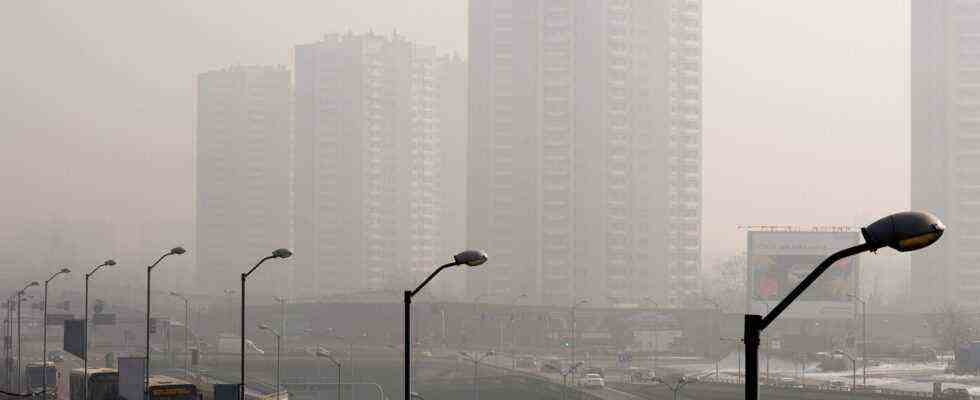Status: 01/21/2022 05:19 am
Of the 50 EU cities with the worst air pollution, 33 are in Poland – and the winter reliably brings them new smog highs. Even in health resorts the air is to cut.
Bad air quality records have been a sad reality in Poland for years. The list of Polish cities with the dirtiest air in 2020 published by the activist organization “Polish Smog Alert” was recently published – with an unusual result.. “Since we started analyzing the measurement results and publishing the rankings of the smog leaders , there was never a situation where one city won in all categories. It’s different this time,” says Piotr Siergiej.
The undisputed winner was Nowy Targ, unrivaled in terms of average annual concentration of PM10 dust, number of days of unbreathable air and annual concentration of the carcinogen benzo(a)pyrene.
Old furnaces and coal – a combination that makes the air bad even in climatic health resorts like Nowy Targ.
Image: picture alliance / NurPhoto
Fat soot from old coal stoves
According to experts, the biggest cause of the smog problem in Poland is heating in houses: many people in Poland still burn coal in household stoves for this purpose. In addition to wood and charcoal, rubbish also finds its way into domestic ovens. In addition, there are insufficient anti-smog measures at national and local level.
In 2018, the government launched the “Clean Air Program”. It envisages that by 2028 all such old coal stoves will be removed from homes and replaced with environmentally friendly gas heaters. But gas is comparatively expensive, and prices have just risen sharply again.
That is why many Poles depend on coal for heating in winter. Sometimes inferior, cheap charcoal is also used, although it is actually forbidden. Currently there are still up to three and a half million old coal stoves in the country that have not yet been replaced.
More than 1000 percent above the norm
Piotr Siergiej from Polish Smog Alert, the activist group actively fighting smog, says the replacement of old coal stoves is far too slow. “No wonder the impact of this government initiative is therefore difficult to see and feel. It’s enough that it’s getting a little colder outside the window and there are many places in our country where the norms have fallen by more than 1000 percent be surpassed,” says Piotr Siergiej.
In communities where very high exceedance standards are forecast, the government is even sending out text message alerts: “Warning! Poor air quality is forecast today in terms of particulate matter. Refrain from outdoor activities!”
A trip with repercussions
Last year Patryk Białas took his children to Szczyrk, a popular winter sports and health resort in the Polish mountains. The evening walk turned out to be a nightmare from his point of view: the air was thick with smog.
Bialas decided to challenge the legality of collecting the climate tax. “Instead of clean air, there is smog. It’s not fair to charge for it,” Bialas said after his visit, calling on the city government to abolish the fee. The officials ignored his request, but he didn’t give up and brought the case to court: “The title of a health resort obliges,” said Bialas at the time, who is himself a well-known environmental activist in Katowice.
The Supreme Administrative Court recently agreed with him. The ruling now bans Szczyrk from collecting the tourist tax because the city is in a zone where air quality standards are exceeded. He is satisfied with the verdict, says Bialas, but it is “a joy through tears.” It is gratifying that the Supreme Administrative Court found that the place violated the law by charging tourist fees. But the judgment also confirms “that the air quality in Polish resorts is terrible and many of them only simulate anti-smog measures”.
The mayor’s perspective
For Szczyrk, the new regulation means a loss of around PLN 800,000 (about 200,000 euros, editor’s note) per year in cash. Mayor Antoni Byrdy is dissatisfied with this court decision: In his opinion, the tourists themselves are responsible for the poor air quality because they come in their cars.
Byrdy emphasizes that a lot is being done in Szczyrk to eliminate sources of emissions, but this cannot be done overnight: “Chimneys bother everyone, but 10,000 cars entering the city impress nobody,” he said in a radio interview .

